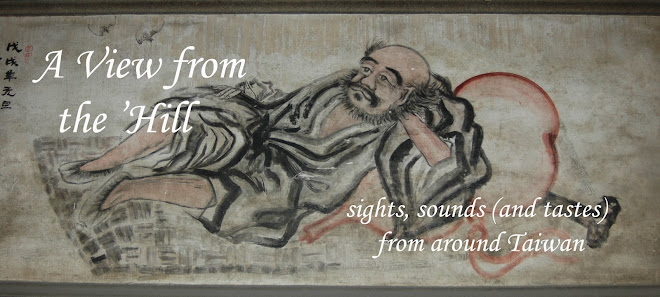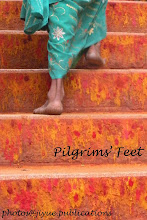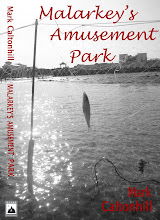TEXT AND PHOTOS BY MARK CALTONHILL
For an experience unlike any other in the ROC, make a trip to Kinmen; nowhere else is quite like this tiny archipelago of islands.
Located 230 kilometers from Taiwan proper but as little as two kilometers from the PRC coastline, Kinmen (once better known in the west as Quemoy) for most of the last half-century was as close as Taiwanese could get to mainland China. And then it was only in military uniform, since the archipelago of two inhabited islands and many uninhabited ones was long off-limits to civilian outsiders. Even most of the original residents had long ago fled Communist bombardments and the cultural isolation for the suburbs of Taipei and elsewhere in Taiwan.
Now open to tourists – including visitors from the mainland – and one of the initial gateways for travel to Fujian Province and beyond under the Three-Mini-Links, Kinmen (金門; pronounced “Jin-men”: the K comes from the same earlier romanization system that made Beijing into Peking) is something of a paradise and a paradox.
It is a paradox partly because, while it is resolutely part of the ROC, it has never been part of Taiwan. Rather, along with the islands of Matsu (馬祖), it is a tiny bit of Fujian Province still under ROC control. Moreover, just as its economy is heavily dependent on Chinese goods and Chinese tourists, even its birds, insects, and plants are more Chinese than Taiwanese. But it is even more of a paradox because although a million or so PRC bombs fell on the islands’ 134 square kilometers, its infrastructure was spared the more damaging urbanization and industrialization that affected Taiwan proper. As a result, it has a far higher proportion of historical buildings preserved.
Architecturally, therefore, Kinmen is fascinating. One absolute must, for all but the most transient of visitors, is to stay overnight in one of these properties, many of which date from the end or even middle of the 19th century and were built in traditional Fujian style. The grander buildings belonged to successful candidates in the imperial examinations, who then were sent elsewhere in China to hold official positions, sending back money to the clans that had supported their years of study. These buildings can be identified by the sweeping “swallow tail” roofs, distinct from the “horseback” structures of ordinary citizens.
Many of the “horseback” buildings are also quite substantial, since Kinmen was a key player in trade between China and the Chinese diaspora of Southeast Asia and beyond. Even those who could not afford to build a complete new house sometimes added an extra wing or extra story (traditionally Fujianese homes were single-storied). Exploring these architectural details, often executed in the latest fashions of the period, such as Baroque ideas brought back from abroad, is an attraction for visitors to even the smallest village in Kinmen. And with such newfound riches, the builders had to find ever more ingenious ways to protect the inhabitants from the pirates who still plundered the south China coast as they had for millennia, so there are high windowless walls, sniper nests, and hidden rooms to look for.
Some of these houses have been preserved by their first owners’ descendents, but many long ago fell into disrepair, especially after many residents moved to Taiwan to escape the salvos. It is primarily these latter structures that are now set up as restaurants, shops, museums, galleries, and above all as homestays, under an innovative, and initially controversial, program operated by the Kinmen National Park administration. The government organization pays for the renovation of private buildings in return for a 30-year lease on their use. Instead of operating the buildings itself, it puts them up for tender for local people (and occasional outsiders) to suggest projects for their use.
As a result of that program, tourists now have the chance to stay in a 19th century merchant’s home, renovated and refurbished in classical style, in the winding streets of Zhushan Village (珠山), or in dozens of similarly fascinating buildings. The cost is around NT$1,400 a night for two people, including traditional Kinmen breakfast (www.official-house.idv.tw),
Another renovation project, located in the old Jinshui Elementary School in Shuitou Village (水頭), houses a museum explaining the way of life of Kinmen residents in former times, particularly those who went abroad for work, first as laborers and later as merchants. The information, presented in English as well as Chinese, includes the estimate that around half a million Kinmen descendents now live overseas, a figure about ten times the island’s current population.
So many properties have been renovated in Shuitou in southwest Kinmen that the whole village resembles one large outdoor museum. Another good place to view historic buildings is in the island’s northeast at the Shanhou Culture Village (山后民俗文化村) in Jinsha Township, but visitors will see stunning scenes wherever they travel.
Wind lion statues
While in the northeast, the windiest part of the island, take a look at Kinmen’s iconic wind lions (風獅爺). Stone statues of varying sizes and designs – some holding objects such as pens, balls, or ribbons; some freestanding and some bas-relief on the side of houses; sometimes one for each village and sometimes one per house, they are worshiped to this day by local people to protect themselves, their boats, and crops from the strong winds. No one seems to know their origins, but they are a unique feature of Kinmen, and as such are much collected in miniature as souvenirs by visitors.
Other commonly bought items to take home include locally made knives and bottles of Kinmen kaoliang (高梁), a distilled liquor made predominantly from sorghum. Though the latter can be found in any supermarket throughout Taiwan, special designs of bottles and limited-quantity runs are only available at the distillery. Kaoliang is so synonymous with Kinmen in the minds of Taiwanese that most assume it was always made there, though in fact sorghum is a temperate grain, commonly grown in Shandong and other northern Chinese provinces.
When Chiang Kai-shek’s Nationalist forces lost the Chinese Civil War in 1949, by sheer historical fluke they were left in possession of the Kinmen and Matsu groups of islands. (Another common misconception is that Chiang intentionally held this territory as a bridgehead for reinvading the mainland, but in truth, it was merely accidental that these were the last two positions from which he was retreating to Taiwan when the Korean War started and the U.S. Navy entered the Taiwan Strait to prevent any further advance by Mao’s Communists.)
As mentioned above, many local residents relocated to Taiwan proper, but for those who stayed, the traditional occupations of fishing and trading were no longer possible with the islands under a virtual state of siege. By a stroke of good fortune, one of the island’s senior officers, General Hu Lian, was originally from Shandong. He recognized that Kinmen’s soil and water were suited to growing sorghum and making kaoliang liquor.
According to information provided at the visitor center of the distillery – another must-see of any trip – the plant now produces around 24 million liters of 38% and 58% liquor, generating around NT$12 billion (about US$400 million) to national and local coffers, and making Kinmen one of only two counties in the ROC not in debt to the central government.
While in central Kinmen, another destination for those with a taste for culinary tourism is the Sheng Zu Food & Beverage Corp. (301 Boyu Rd., Sec.2, Jinning), famed for its production of “imperial tribute candy” (貢糖). Originally peanut flavored, it now comes in around a dozen modern variations on this classic recipe. The name is said to derive from the confection being so good that it was presented to the imperial court, and while this is perhaps legend – or more likely, PR – the quantities sold from the company’s gift shop suggest it at least satisfies the Taiwanese palate.
Peanuts grow well in Kinmen’s soil and can be seen growing in fields and drying in the courtyards in front of people’s homes. While in the countryside, look out for cows as well. For Taiwanese accustomed to water buffalo, these “yellow cattle” (黃牛) are quite unusual. Elderly farmers still use them for plowing and other heavy work, and out of respect and gratitude do not eat beef. Those of the younger generation, however, now keep herds commercially, and beef jerky (牛肉乾) has become another Kinmen specialty.
From swords to plowshares
A last culinary-related destination are Kinmen’s knife makers, who are renowned for using the steel from unexploded Communist artillery shells to manufacture high-quality kitchen equipment. Wu Tseng-dong of Maestro Wu’s Chin Ho Li (金合利) knife factory puts on a show for tourists and will hand-make a knife specifically to a visitor’s needs. His family started out making agricultural tools, but switched to knives after the PRC shelling of Kinmen began in earnest on August 23, 1958. Over the next 44 days, around half a million artillery rounds targeted the island, and roughly the same number fell again over the next two decades, though many of these later missiles contained propaganda materials rather than explosives. Wu’s father and other blacksmiths used the steel to make knives and sold them to soldiers stationed on the island. By word of mouth, they became famous throughout Taiwan for their high quality.
Signs of war are evident all around Kinmen: a tank stands corroding on a beach near the airport; “Danger - Mines” signs hang beside coastal paths on Leiyu (烈嶼), the second inhabited island, better known as Little Kinmen; a grenade-shaped monument stands beside the road; and near Guningtou Village (古寧頭), site of a major battle of 1949 when PRC soldiers landed on Kinmen, there is a temple dedicated to Regimental Commander Li Guang-qian (李光前). Li lost his life but led his troops to victory and is worshiped by local people as War Lord of Guningtou and guardian deity of Jinnin Town, where a road is also named in his honor.
Many former military sites are now war-tourism hot spots. These include the broadcasting station at Mashan (馬山) in northeast Kinmen, the closest point to mainland China, where singer Teresa Teng and others exalted the virtues of life in Free China over enormous loudspeakers to PRC citizens.
Mashan also has fortifications and short tunnels, but those built at Qionglin (瓊林) in the center of Kinmen, where the PLA was expected to attack, are more extensive and well worth the NT$10 ticket price. In fact, rather than having a military purpose, these tunnels were largely built by local residents so they could continue their lives as normally as possible even when under attack.
For military fortifications, head to Yongshi Fort (勇士堡) on Little Kinmen, where there are gun emplacements, an arsenal, dormitories, officers’ rooms, a kitchen and tank emplacements, all underground and all connected by miles of tunnels. Visitors can walk or ride bicycles through the tunnels to nearby Tiehan Fort (鐵漢堡).
So much for the historical and cultural attractions, most of which come under the administration of the National Park Service. But given the islands’ sparse population, there are also natural wonders to explore. Of especial interest are the birds, as these small islands offer permanent or temporary abode to around 300 species, compared with a total of around 500 for the whole of the ROC. The various woodland, marsh, beach, and agricultural habitats are suited to ospreys, storks, cormorants, lesser pied kingfishers, and falcated teals, among others, as well as such local favorites as the Tibetan hoopoe and blue-tailed bee eater.
Good places to see bee eaters feeding, mating, and teaching fledglings to fly are Tianpu Reservoir (田埔水庫) and Qingnian Nongzhuang (青年農莊) in Jinsha Township (金沙鎮) in eastern Kinmen.
Other bird-watching sites include the Shuangli Wetlands (雙鯉濕地) for kingfishers, waterfowl, and birds of prey; Lake Ci (慈湖) for cormorants; and Lingshui and Xi lakes (陵水湖, 西湖) and the Tiandun Sea Wall (田墩海堤) for oriental skylarks, oystercatchers, terns, and collared pratincoles.
Visitors will also see plenty of butterflies in season, but only the most fortunate will catch sight of Eurasian otters, which live in fresh water but may be active in shallow coastal waters after dark.
The horseshoe crab, once consumed as a delicacy or used as fertilizer, and their shells turned into ladles or hung on walls to repel evil, is now a protected species. This ancient creature, actually related to spiders and not a crab at all, has barely changed in hundreds of millions of years. Females come ashore in summer to lay eggs in the sand above the high tide line, and their offspring do not reach adulthood until about 14 years of age, making them highly susceptible to environmental stress. Their complete life cycle and Kinmen’s suitable habitats are introduced at the Horseshoe Visitor Center (2 Xihai Rd., Sec.1, Jincheng Township), and small crabs can be explored for at the nearby bay behind the Juguang Tower (莒光樓).
From there a causeway connects to the now uninhabited Chenggong Isle (建功嶼), previously a military base and earlier a leper colony, which faces the Chinese city of Xiamen (廈門) just 10 kilometers away.
One new inhabitant of this islet is a giant statue of Zheng Cheng-gong (鄭成功; also known as Koxinga), who used Kinmen as a base for several years before evicting the Dutch from Taiwan in 1661. Paid for by citizens of the PRC, the gift would seem to symbolize the fact that instead of fortifying against an attack by China, the islands are now welcoming a daily “invasion” of shoppers and sightseers from across the water. The numbers may well grow further if a current move to open Kinmen to gambling casinos proves successful.
Text and photos copyright Taiwan Business Topics and Jiyue Publications 2011/2012







No comments:
Post a Comment